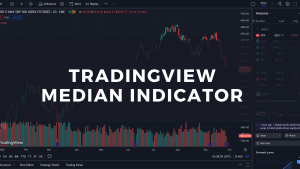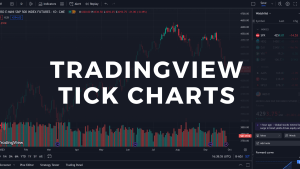Volatility and Trading
Everyone is always talking about volatility. But how does it really affect your trading and how can you use it to your advantage? If you are stuck and not seeing the results you desire, becoming a volatility expert can potentially help you take the next step. Increasing the size of your profitable trades, avoiding stop runs during high volatility times and maximizing the win to loss potential of trades are just three examples of how volatility can benefit your trading.
The screenshot below shows why it is necessary to trade with a volatility-adjusted trading strategy. The ATR – average true range indicator – (more on that later) is plotted at the bottom and the indicator shows that price constantly shifts from low to high volatility periods. If your trading shows inconsistent results, volatility could be at the core of your problem.
The two big myths about volatility
To fully understand how to use volatility, we have to do away with the two biggest myths about volatility first. Those two myths are responsible for a lot of misunderstandings and failure in trading. This is what you need to know to avoid the most commonly made mistakes of amateur traders:
- Volatility is good
Especially in social media and trading forums, you can observe how traders become increasingly frustrated during times of low volatility and then overly excited when volatility picks up again. The general belief that volatility is necessary, or good, is a very dangerous one. Volatility is neither good, nor bad; it is just a measurement of how prices move and fluctuate.
For amateur traders, a lack of volatility usually means a lack of excitement. Whereas the professional understands that he has to adjust with his trading style, the amateurs stand on the sidelines, clueless what to do; boredom during low volatility often leads to impulsive trading decisions that could have been avoided.
- Volatility is bearish
It is important to understand that volatility is non-directional, which means that volatility does not predict or indicate whether prices are falling or rising. But even financial media often creates the impression that volatility is connected to a certain direction; whenever you see the volatility index picking up, financial media comes to the fore discussing new potential market sell-offs.
Both myths create a fixed and dangerous mindset for traders. If you can fully understand and accept that volatility is just a statistical measurement that has no predictive value, you can trade with an open mindset, detached from fixed assumptions and use volatility to your advantage.
How to use volatility to your advantage
Now that you understand that volatility is neither good, nor bad and that it is also non-directional, we can start looking at how to use volatility to our advantage. The good news is that exploiting volatility is very straight forward and there are only two ways how a trader needs to adjust in order to benefit from shifting volatility.
1 – Stop and profit placement
The most important factor for volatility-adjusted trading strategies is the order placement. The following points describe what traders usually experience during different volatility phases.
| Low volatility | High volatility | |
| Stop placement | Stops set too far away reduce the expectancy of a trading system. | Stops are often set too conservative and the trader experiences stop runs. |
| Take profit placement | Profit targets are set too wide and price often turns ahead of the target. | Profit targets are set too conservative and the trader miss out on profit potential. |
Financial markets are dynamic and constantly changing, but the trading systems traders use are usually static and always the same; looking at it this way, it is obvious that applying a static system to a dynamic market has to lead to inconsistent trading results.
To overcome the problem of static trading systems, a trader should start monitoring volatility (we cover the best volatility tools later on) and adjust his stop and profit placement in an organized fashion.
Position sizing
As a consequence of flexible order placement, the position sizing of a volatility-adjusted trading system has to be flexible as well. The following example shows the necessity of adjusting the position size based on stop placement.
In times of higher volatility, the trader sets his stop further away. To achieve the same percentage risk, he has to buy fewer contracts to make up for a larger stop distance. When volatility is low, the stop loss should be set closer to the entry and the trader has to buy more contracts to achieve the same percentage risk.
It is important to understand that the percentage risk always stays the same, but the absolute number of contracts changes based on the stop loss distance.
The best tools to measure volatility
When it comes to picking volatility measurement tools, there is no right or wrong and no tool or indicator is better than the other. We will briefly go over the 3 most commonly used tools and explain how to use them in your trading.
The VIX – the volatility index
The VIX is the volatility measurement of the S&P500 stock market index. The VIX is a broader volatility measurement and should not be consulted to make specific volatility based adjustments, but it provides important insights about the state of the overall market and the level of risk appetite.
ATR – the average true range indicator
The average true range indicator is among the most popular volatility indicators because it provides market and instrument specific volatility information. The ATR measures the average distance price has traveled over the time of a candlestick or any other period. A high ATR means that, on average, the price movements are larger and price fluctuation is high; a low ATR means that the size of candles is small with little wicks and it fluctuates more around the mean.
Bollinger Bands
Bollinger Bands are a great tool when it comes to identifying the strength of a market. Widening Bollinger Bands signal a greater volatility and price movements outside the Bollinger Bands can often signal high momentum price movements. Thus, the Bollinger Bands are a multi-faceted volatility based tool.
The takeaway message
Although volatility is a far-reaching and complex field in trading, the following points sum up what we have discussed so far:
- Financial markets are dynamic and most traders follow a static trading system which leads to inconsistent trading results
- Stop loss and take profit placement has to be adjusted based on volatility
- When a trader adjusts his stop loss distance, he can keep his percentage risk fixed by adjusting the quantity of contracts he buys
- The VIX is a broad volatility measurement
- The ATR is a market and instrument specific volatility measurement
- Bollinger Bands are a multi-faceted trading tool, providing information about volatility and price strength
Trading futures and options involves substantial risk of loss and is not suitable for all investors. Past performance is not necessarily indicative of future results. The risk of loss in trading commodity interests can be substantial. The placement of contingent orders by you or broker, or trading advisor, such as a “stop-loss” or “stop-limit” order, will not necessarily limit your losses to the intended amounts, since market conditions may make it impossible to execute such orders
















